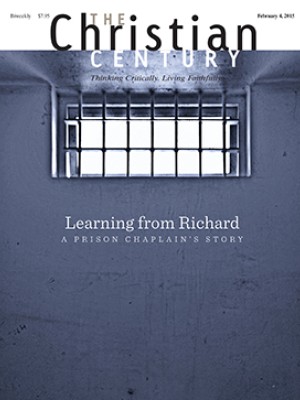Sustainable expectations

I keep getting lost in this sprawling 38,000-square-foot building. Each time I go astray, I find a new room to explore. A few days ago, the sexton opened a random corner door, expecting to see a closet; instead, she discovered a fully functioning kitchen. I’m not surprised that the building is listed on the National Register of Historic Places.
Climbing the steps, I imagine the building in its glory, when it housed Saint Andrew’s United Methodist Church, which was one of the largest congregations in Chattanooga, Tennessee. The church closed in 2004 and transferred ownership of the building to Saint Andrew’s Center, a faith-based organization that served a growing immigrant population. The center became the home for Mercy Junction, the ministry that my husband, Brian Merritt, founded as an evangelist for the Presbytery of East Tennessee.
Read our latest issue or browse back issues.
Mercy Junction has been in existence for about two and a half years, and it has a dedicated group of people, but it’s far from being financially self-sustaining. When the Saint Andrew’s Center board asked Mercy Junction to take over as manager of the building, overseeing maintenance and rental, it agreed—and added staff quickly, making sure it had personnel adequate for its mission.
I’m not on staff, but I serve as a member of Mercy Junction’s board, and I’m moving my office into the center as a ministry partner. I’m just down the hall from a nutrition center for Haitian children and classrooms for students learning English. The center will allow Mercy Junction to have a space in which to worship. It will also provide an infrastructure for Mercy Junction’s social justice work, host a fair trade store, and furnish exhibit, studio, and marketing space for folk artists, craftspeople, and do-it-yourself publishers. I’m one of the ones who pays rent for my space.
My contribution, along with the checks of other building partners, will help Mercy Junction become sustainable in time—a shorter time than would have been possible without this arrangement.
That word sustainable causes shudders in pastors who start new communities. When a fledgling church has denominational backing, the grantors typically want to know where the income will come from in a few years.
Of course, the question of sustainability is not just for new churches. Many traditional congregations are not financially viable. When one pastor asked if Mercy Junction was ever going to be sustainable, I asked him, “How many new members have joined your church in the last two years? Are those members giving enough to pay for your entire salary?” The answer, of course, was no.
Many traditional churches have been operating in the red, cutting into their meager nest egg to make it from month to month. Often churches use bequests from deceased members to cover emergency maintenance or operating expenses. In short, existing churches often live off of the death of their older members rather than the vitality of new ones.
The Ecumenical Partners in Outreach and the Center for Progressive Renewal collaborated on a two-year study of new mainline ministries, with a particular interest in sustainability. According to the report, start-up communities are more diverse and younger than historic congregations. New church developments reach people who are unchurched. The downside is that members of these new communities cannot give much financially to the church or have not been taught to give.
In this context, some church leaders ask, “Do pastors really need to be paid? Can’t they become tent makers?” Or, “Do we really need pastors?” But most denominations remain committed to having theologically trained pastors, and they continue to put a great deal of energy and effort into seminary education and ordination systems. Unless we want to limit our clergy pool to the wealthy 1 percent, most pastors will enter ministry needing an income that allows them to pay back their loans and support their families—meaning a salary that is more than a barista’s tips.
So what are we going to do? Many new communities have decided to start businesses alongside their church. However, new businesses have a much higher failure rate than new churches, so a business partnership isn’t always the answer.
Mercy Junction was blessed when it was given a building. With this space, it hopes to be sustainable soon. But not every community has this sort of opportunity.
The Center for Progressive Renewal reports that it takes eight to ten years for a new congregation to become sustainable—longer than in previous decades, when the norm was three to five years. In light of shifting societal attitudes regarding church, this seems about right. As denominations think about how to plant sustainable communities, expectations will need to change.







